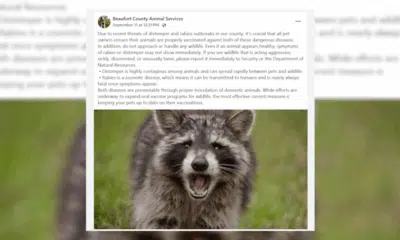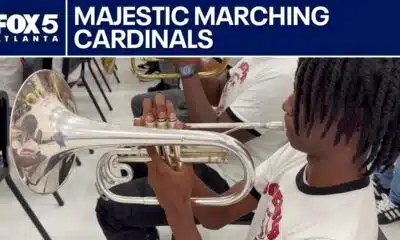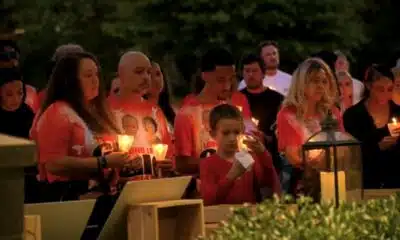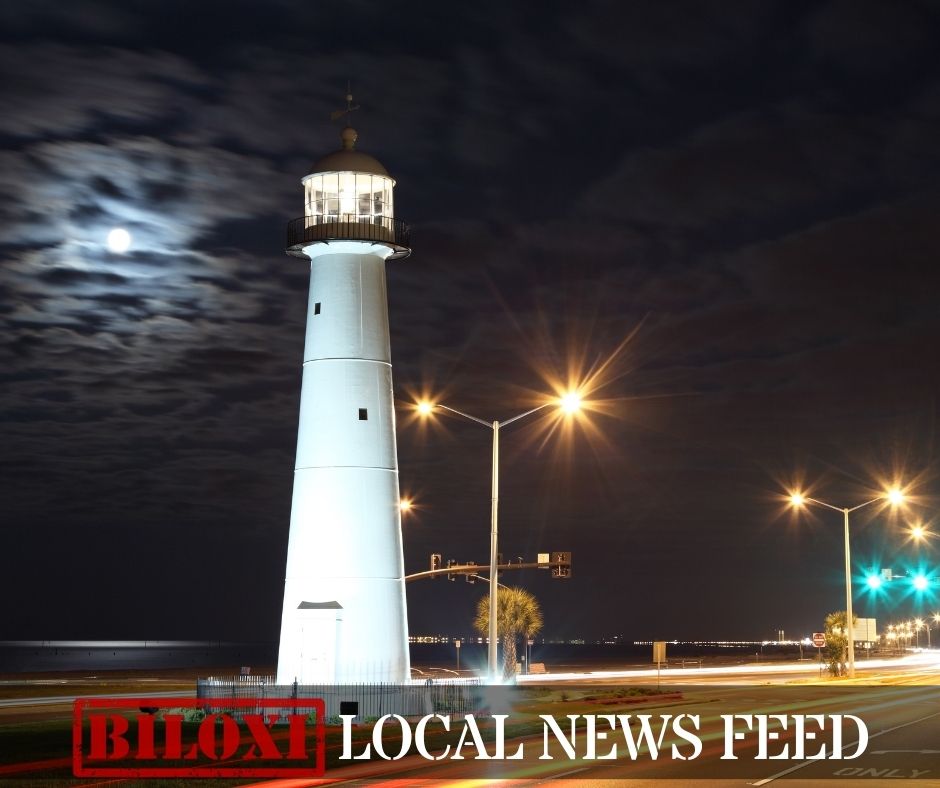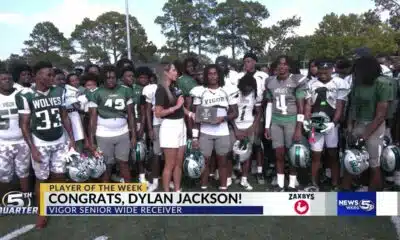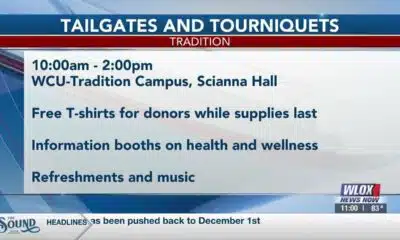News from the South - Georgia News Feed
Georgia DNR officials outline plan intended to contain spread of ‘zombie deer disease’ • Georgia Recorder
Georgia DNR officials outline plan intended to contain spread of ‘zombie deer disease’
by Ross Williams, Georgia Recorder
January 28, 2025
Starting next deer season, hunters in south Georgia will have the option to drop off the heads of deer they take to be tested for a fatal and infectious brain-eating disease sometimes called “zombie deer disease.”
“We’re going to set up self-serve freezer drop-off locations, where a hunter, someone like me and you that wants to process their own deer, when we leave our lease or our property, we can stop at this freezer location, cut that head off or take the skull cap off, put your information on a card, you put in your freezer and our staff will come by and pick those up and get them tested,” said Tina Johansson, assistant chief of game management at the Georgia Department of Natural Resources.
Johansson was briefing state House members on Chronic Wasting Disease Monday morning at a hearing of the state House Game, Fish and Parks Committee. The department announced last week that a deer harvested in south Georgia tested positive for the disease, the first time it has been found in the state. She said DNR’s goal will be to keep the prevalence of the disease at below 5%, but unlike in some other states, Georgia does not plan to require hunters to have their deer tested.
“We don’t anticipate setting up mandatory check stations,” Johansson said. “We will, of course, have our self-service locations down there, and we will be putting staff out on busy weekends to help out and just interface with hunters and explain what’s going on down there. We don’t anticipate any — we’re certainly not proposing any sort of ban on baiting within those counties.”
Baiting deer is a controversial practice that some consider unsportsmanlike. Environmentalists say spreading out deer corn can be bad for wildlife – and that encouraging deer to gather in one place can help spread diseases like CWD.
“Other states with CWD outbreaks have suspended deer baiting in the area,” said Mark Woodall, Georgia legislative chair for the Sierra Club. “DNR’s failure to limit deer baiting appears to be playing politics instead of following the science. I guess they don’t want to offend some landowners and feed mills. This is regulatory malpractice and it’s disgraceful.”
For now, the DNR’s chronic wasting disease management area only includes Lanier and Berrien counties, but it is expected to encompass more of the state as the disease is likely to spread.
Chronic Wasting is a neurological disease that affects members of the deer family including elk and moose. It’s caused not by a bacteria or virus but by prions, a type of abnormally folded protein that can cause other proteins in the brain to misfold. When enough of these build up, the animal will start to show symptoms, which can include listlessness, lack of coordination and weight loss.
The disease is 100% fatal for the animals. It’s bad news for deer, but not necessarily for deer hunters, said Department of Natural Resources Deputy Commissioner Trevor Santos.
“I want to first and foremost assure you and our hunters that deer hunting will continue to thrive in this state,” Santos told lawmakers Monday. “This is not the end of deer hunting as we know it, despite this discovery that we made a week before last. Our plan is to work together with all of the members of the General Assembly, all hunters, as well as all Georgians. This gets outside of just those of us that wear camouflage on their day off to manage this disease and maintain a healthy deer herd.
According to the DNR, hunting in Georgia generates about $1.6 billion and supports over 150,000 jobs. Georgia’s deer hunting season for firearms generally runs from about mid October to mid January.
“You’re not going to hear a lot of positive from the rest of the presentation, but I want you to know that everything is fine as far as our deer herd goes in this state,” Santos added.
The misshapen prions can build up in the infected animals’ brain over the course of 18 to 30 months before they show any symptoms, but they can spread the disease before they appear ill, Johansson said.
“It will look perfectly healthy until the last few weeks or months of the disease course, and that’s when you’ll see that wasting that gives it its title,” she said. “At some point, it starts to shed these infectious prions. Those are shed in saliva, they’re shed in urine, they’re shed in feces. They’re exposing other deer to these prions long before they show any symptoms. They’re also contaminating their environment.”
Deer can spread the disease simply by rubbing noses, and waste and carcasses can spread it onto the landscape, where it can linger far longer than the average virus.
“The prions, what’s their life span outside on the ground?” Asked committee Chairman Trey Rhodes, a Greensboro Republican.
“Indefinite,” Johansson said. “Proteins, as you know, are the building block of the physical body, and so these prions are difficult to destroy. Their infectivity is really unknown once it’s out on the landscape. We know it varies, but it’s not something that you can cook out of the meat or put in the freezer first and then it’s safer to eat. It’s something that is going to stay out there for a long time.”
According to the Atlanta-based Centers for Disease Control and Prevention, there have been no known cases of CWD in humans, but the CDC strongly recommends having deer or elk tested and not eating any meat from an animal that tests positive.
A similar disease, bovine spongiform encephalopathy, also known as mad cow disease, can lead to illness and death in humans.
In addition to offering testing, the DNR will increase its monitoring efforts, which involve working with meat processors and taxidermists to monitor the deer population. Participating processors will send samples to a lab at the University of Georgia’s College of Veterinary Medicine. The testing process typically takes about two weeks, and hunters will be notified of their results. The process will not prevent hunters from keeping the deers’ antlers.
Georgia is not likely to ever eradicate the disease entirely, but Johansson said the state is in a better position because it has had time to draw up plans and learn from other states. She said DNR has been monitoring for CWD for about 20 years and is the 36th state to detect the disease.
“CWD is likely here to stay, unless we’re one of the very, very fortunate few who have found it very, very, very early,” she said. “We will have to continually do surveillance and we will have to do adaptive management, and by that, I mean we will continue to learn from other states, we’ll learn from ourselves and we’ll adapt our plans moving forward.”
YOU MAKE OUR WORK POSSIBLE.
Georgia Recorder is part of States Newsroom, a nonprofit news network supported by grants and a coalition of donors as a 501c(3) public charity. Georgia Recorder maintains editorial independence. Contact Editor John McCosh for questions: info@georgiarecorder.com.
The post Georgia DNR officials outline plan intended to contain spread of ‘zombie deer disease’ • Georgia Recorder appeared first on georgiarecorder.com
News from the South - Georgia News Feed
Beaufort County warns of rabies and distemper threat to pets, animal officials urge vaccinations
SUMMARY: Beaufort County Animal Services warned residents of recent threats of rabies and distemper outbreaks. Both diseases are deadly; distemper spreads rapidly among animals, while rabies is zoonotic and nearly always fatal once symptoms appear. Rabies is common in local wildlife like bats, raccoons, and foxes, and occasionally in stray cats and dogs. Vaccination is crucial to protect pets, as unvaccinated animals exposed to rabies face a six-month quarantine, while vaccinated pets have a ten-day quarantine. If a pet is bitten or a rabid/distempered animal is spotted, report it to the health department and Department of Natural Resources immediately.
Read the full article
The post Beaufort County warns of rabies and distemper threat to pets, animal officials urge vaccinations appeared first on www.wsav.com
News from the South - Georgia News Feed
Jonesboro band culture responsible for global legacy | FOX 5
SUMMARY: Jonesboro High School’s marching band has earned invitations to perform at prestigious events: the New Year’s Day Parade in London and the Rose Parade in Pasadena, California. With 120 students from a Title I school, these opportunities are monumental, often representing students’ first trips outside Georgia. The band director emphasizes the community’s crucial financial support, as costs for London alone reach $300,000, with Pasadena estimated at $200,000-$250,000. Fundraisers, GoFundMe, and Cash App campaigns are underway. Students like junior Gabrielle Bailey express pride and excitement to represent their city and state on global stages, showcasing their talent and dedication.
Jonesboro High School’s Majestic Marching Band is preparing for an extraordinary series of performances. Students credit the …
News from the South - Georgia News Feed
AP Top 25 college football rankings show Georgia Tech, Vanderbilt and USC breaking through
SUMMARY: Ohio State, Penn State, and LSU remain the top three in the Week 4 AP Top 25 poll. Miami rose to No. 4 after dominant wins over USF and Georgia, while Georgia Tech entered the Top 25 following a 24-21 upset of Clemson. Texas A&M jumped into the top 10 after beating Notre Dame, which remains ranked despite an 0-2 start. Oregon dropped to No. 6 despite a strong win. Clemson, South Carolina, and Notre Dame suffered setbacks, risking their rankings. The Heisman race shifts as preseason favorites falter. Voters consider factors beyond scores, emphasizing performance quality and common opponents.
Read the full article
The post AP Top 25 college football rankings show Georgia Tech, Vanderbilt and USC breaking through appeared first on www.wsav.com
-
News from the South - Kentucky News Feed6 days ago
Lexington man accused of carjacking, firing gun during police chase faces federal firearm charge
-
News from the South - Alabama News Feed6 days ago
Zaxby's Player of the Week: Dylan Jackson, Vigor WR
-
The Center Square7 days ago
California mother says daughter killed herself after being transitioned by school | California
-
News from the South - Arkansas News Feed7 days ago
Arkansas medical marijuana sales on pace for record year
-
Local News Video7 days ago
William Carey University holds 'tailgates and tourniquets' blood drive
-
News from the South - North Carolina News Feed5 days ago
What we know about Charlie Kirk shooting suspect, how he was caught
-
News from the South - Missouri News Feed7 days ago
Local, statewide officials react to Charlie Kirk death after shooting in Utah
-
Local News6 days ago
US stocks inch to more records as inflation slows and Oracle soars









